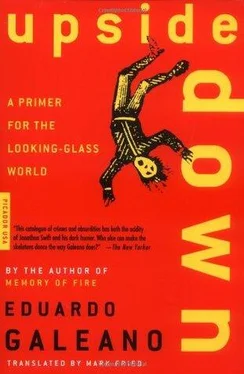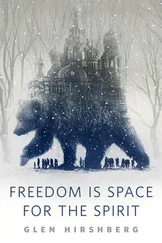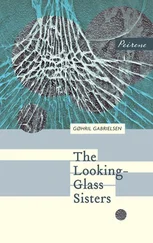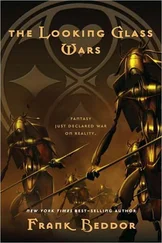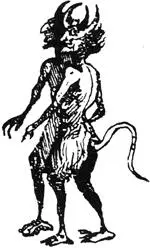
At first view, as the writer Wole Soyinka once said, the map of Africa looks like the creation of a demented weaver who paid no attention to the texture, color, or design of the cloth he was making. Many of the borders that splintered black Africa into over forty pieces can only be explained by a desire for military or commercial control; they have nothing at all to do with historical roots or nature. The colonial powers who drew up the borders were also good at manipulating ethnic contradictions. Divide et impera: one fine day the king of Belgium decided that Tutsis were those who had more than eight cows and Hutus were those who had fewer in the territory today occupied by Rwanda and Burundi. Although the Tutsis, shepherds, and the Hutus, farmers, had different origins, they shared several centuries of common history in the same physical space, spoke the same language, and lived together in peace. They did not know they were enemies but ended up believing it with such fervor that in 1994 massacres between Hutus and Tutsis cost close to a million lives. In the news coverage of this butchery, we never once heard, even by chance — and only rarely did we read — any acknowledgment of Germany’s or Belgium’s colonial assaults on the tradition of peaceful coexistence between two sister peoples or of France’s later contribution of weapons and military aid to facilitate mutual extermination.
Let’s Play War/1
Yenuri Chihuala died in 1995 during the border war between Peru and Ecuador. He was fourteen. Like many other boys from the poor barrios of Lima, he had been recruited by force. They took him away and left no footprints.
Television, radio, and the print media all praised the child martyr as a role model who gave his life for Peru. During those days of war, the daily El Comercio devoted its front page to glorifying the very young people it normally curses on its crime and sports pages. The cholos trinchudos —literally “carved-up half-breeds”—grandchildren of Indians, poor kids with spiky hair and dark skin, are heroes of the fatherland when they wear a military uniform on the battlefield, but these same noble savages are dangerous beasts, violent by nature, when they wear civilian clothes on city streets and in soccer stadiums.
What happens to poor countries is what happens to the poor of every country: the mass media only deign to glance at them when they suffer some spectacular misfortune that will be a hit in the viewers market. How many people must be slain by war or earthquake or drowned in floods for their countries to become news and show up on the map of the world? How many ghosts must someone dying of hunger accumulate before the cameras focus on him for once in his life? The world is like a stage for a gigantic reality show. The poor, the ones who always get overlooked, only appear on TV as some hidden camera’s object of ridicule or as actors in their own cruelties. Those unknown need to be known, the invisible to become visible, the uprooted to have roots. If something doesn’t exist on television, does it exist in reality? Pariahs dream of glory on the small screen, where any sow’s ear can turn into a silk purse. To get to the Olympus where the telegods reside, one poor soul on a variety show even shot himself on camera.
Let’s Play War/2
Video games have a huge and growing public of all ages. Their proponents say that the violence in video games is innocent because it imitates the news and that such entertainment is good for keeping children off the streets and away from the lure of cigarettes.
Video games speak a language made up of the rat-a-tat-tat of machine guns, horror-movie music, agonized screams, and barked commands: “Finish him!” “Beat ’em up!” “Shoot ’em!” The war of the future, the future as war: the most popular video games take place on battlefields where the player has to shoot without a moment’s hesitation, destroying anything that moves. No pause or truce is possible against an enemy stampede of despised extraterrestrials, ferocious robots, humanoid hordes, ghostly cyberdemons, mutant monsters, and skulls that stick out their tongues. The more adversaries the player kills, the closer he comes to winning. In the already-classic Mortal Kombat, you get extra points for blows that decapitate the enemy and send his head flying, that knock his bloody heart right out of his breast, or blast his head into a thousand pieces.
There are also a few video games that are not about war. Car races, for example. In one of them, a good way to score points is to run over pedestrians.


Lately, talk shows have become even more popular than soap operas in some Latin American countries. When the girl who was raped is interviewed, she sobs as if the man were raping her all over again … This monster is the new Elephant Man. Look, ladies and gentlemen, don’t miss this incredible sight … The bearded lady wants a boyfriend … A fat man says he’s pregnant. Thirty or so years ago in Brazil, freak shows brought scores of candidates out of the woodwork and garnered huge TV audiences. Who is the shortest dwarf in the country? Who has a schnoz so long his feet stay dry in the shower? Who is the wretchedest wretch of all? A parade of miracles passed through the studios: a girl with ears eaten by rats; an idiot chained to a bedpost for thirty years; a woman who was the daughter, sister-in-law, mother-in-law, and wife of the drunk who made her a cripple. And every wretch had fans who screamed from the balconies in a chorus: “The winner! The winner!”
The poor nearly always get top billing in crime stories. Any suspect who’s poor can be freely filmed, photographed, and put on display when the police arrest him. That way he’s sentenced by TV and the press before the trial begins. The media declare the pernicious poor guilty from the word go, the same way they condemn pernicious countries, and there is no appeal.
At the end of the eighties, Saddam Hussein was demonized by the same mass media that had previously idolized him. When he became the Satan of Baghdad, Hussein shone as a star of evil in the galaxy of world politics, and the media’s lie machine took care of convincing the world that Iraq was a threat to humanity. At the beginning of 1991, the United States launched Operation Desert Storm with the backing of twenty-eight countries and broad public support. The United States, having just invaded Panama, invaded Iraq because Iraq had invaded Kuwait. With a million extras and at a cost of $1 billion a day, the big show, which writer Tom Engelhardt called the greatest megaproduction in the history of television, was a winner in the stadium of international TV, earning high ratings in every country — and on the New York Stock Exchange, which reached record heights.
For History Class
During the year 1998 the globalized media dedicated the most space and their best energies to the romance between the president of the planet and a plump, voracious, talkative woman named Monica Lewinsky.
In every country we were all Lewinskyized. We had her for breakfast, reading the papers; we had her for lunch, listening to the radio; and we had her for dinner, watching TV.
I think something else happened in 1998, but I can’t remember what.
The art of war, cannibalism as gastronomy: the Gulf war was an interminable, obscene spectacle that paid homage to high-tech weapons and disparaged human life. In that war of machines led by satellites, radars, and computers, TV screens showcased beautiful missiles and marvelous rockets, extraordinary airplanes and smart bombs that with admirable precision turned people into dust. The venture killed a total of 115 North Americans. Nobody bothered to count the Iraqis, though estimates put the figure as high as a hundred thousand. They never appeared on camera; the only victim shown on TV was an oil-slicked duck. Later on, it came out that the image was a fake; the duck was from another war. Retired U.S. Navy Admiral Gene LaRocque commented to Studs Terkel: “We now kill people without ever seeing them. Now you push a button thousands of miles away.… Since it’s all done by remote control, there’s no feeling of remorse.… Then we come home in triumph.”
Читать дальше
